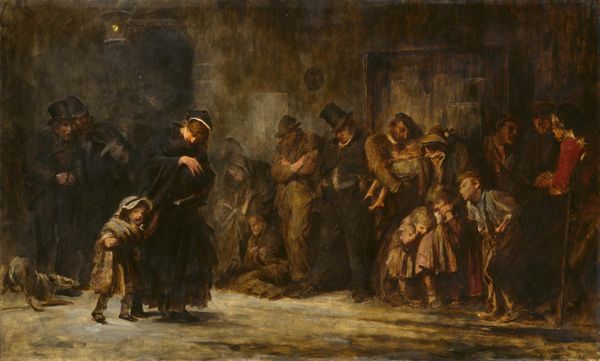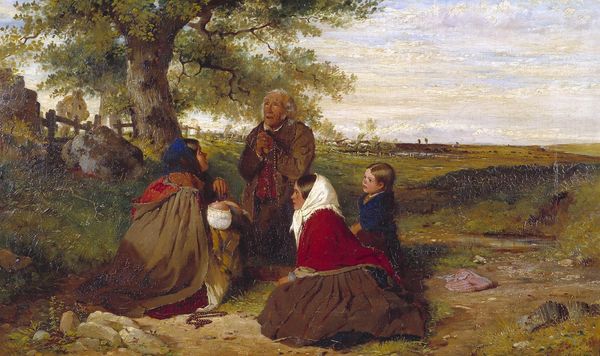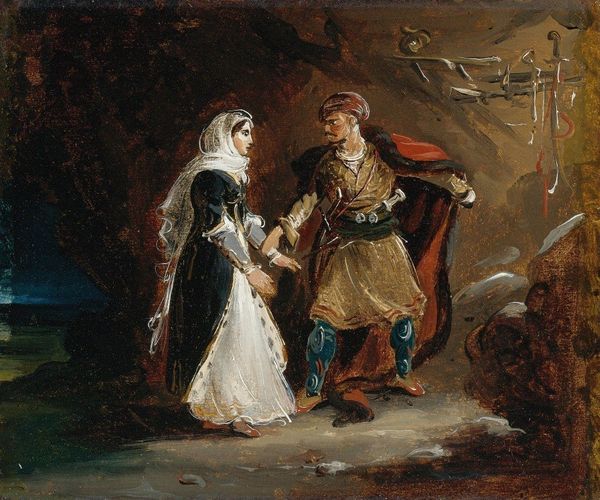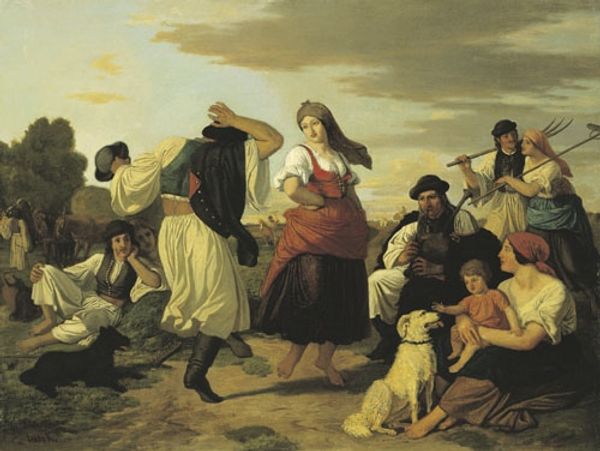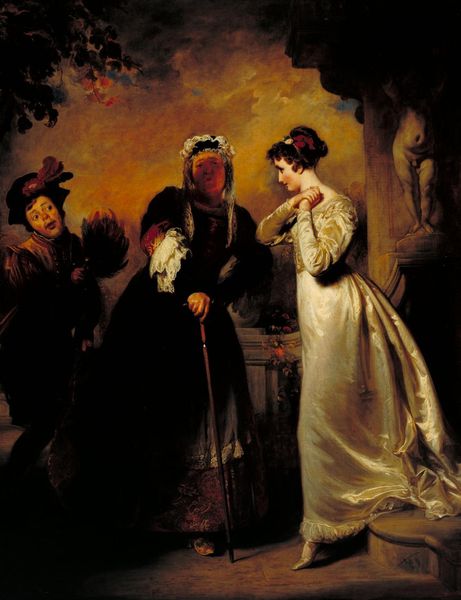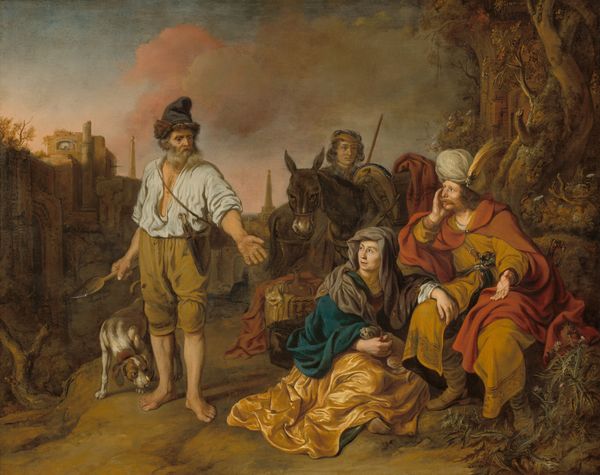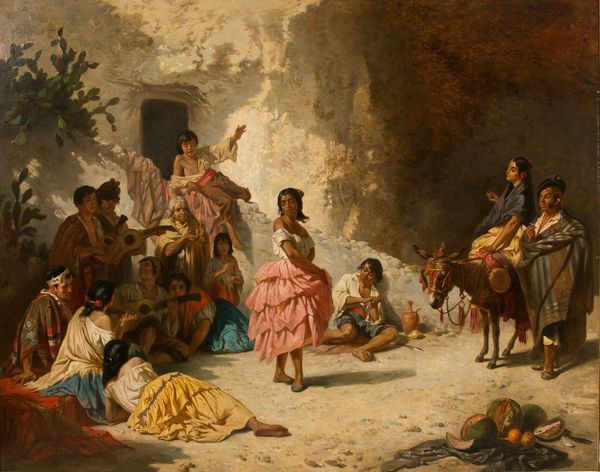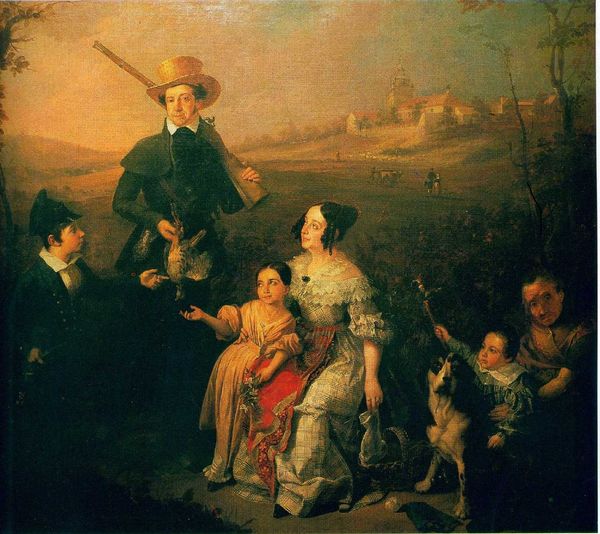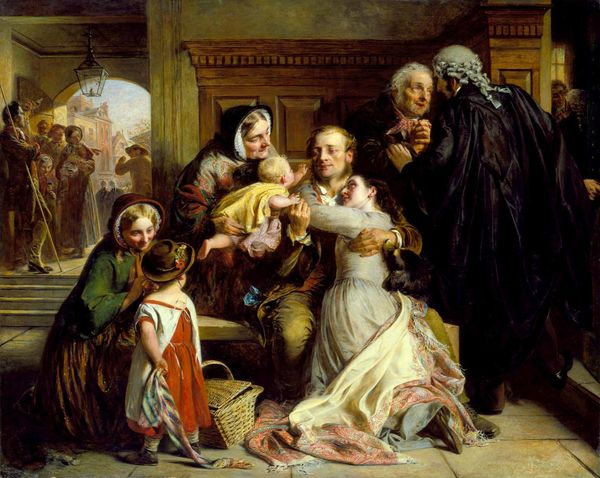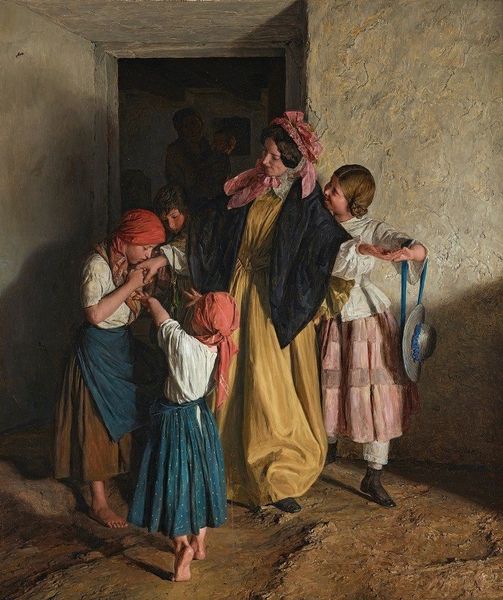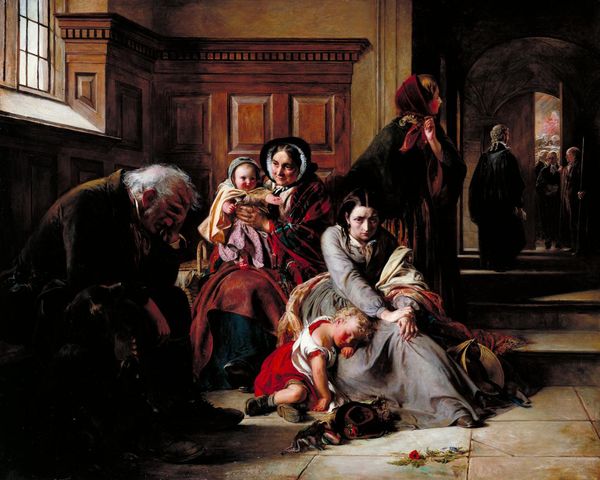
Copyright: Public domain
Editor: Here we have Eastman Johnson's "The Story Teller of the Camp," painted in 1866 using oil paint. I'm struck by the figures' intense attention; there's a sense of shared experience but also something almost dreamlike in the blurry background. What do you make of this work? Curator: Indeed! Consider how the artist stages the storyteller front and center, like a pied piper attracting an audience of townspeople young and old. Eastman Johnson employs a visual vocabulary here. Editor: Can you unpack what you mean by "visual vocabulary"? Curator: I observe recurring motifs and figures across cultures, consider for instance the archetypal role of the storyteller itself. It transcends mere entertainment; it's about transmitting collective values, cultural history. A single individual can evoke vivid emotions and mental pictures, solidifying the audience's cultural identity, wouldn't you say? Editor: That makes perfect sense! So the storyteller represents a vessel, or channel of knowledge. And the dreamy atmosphere emphasizes a sense of nostalgic communal ties. Curator: Exactly! Notice also the recurring use of triangles to frame different sub-groups, further suggesting continuity but simultaneously hierarchical, how curious! Editor: That’s insightful! I was so focused on the emotional expressions that I missed the subtle structure. Curator: Every stroke carries weight, referencing symbolic meaning, tapping into collective memory through visual cues! Now I'm more curious than ever. Editor: It is powerful to remember how images link the present and the past, reflecting on what to keep and what to reconsider!
Comments
No comments
Be the first to comment and join the conversation on the ultimate creative platform.
